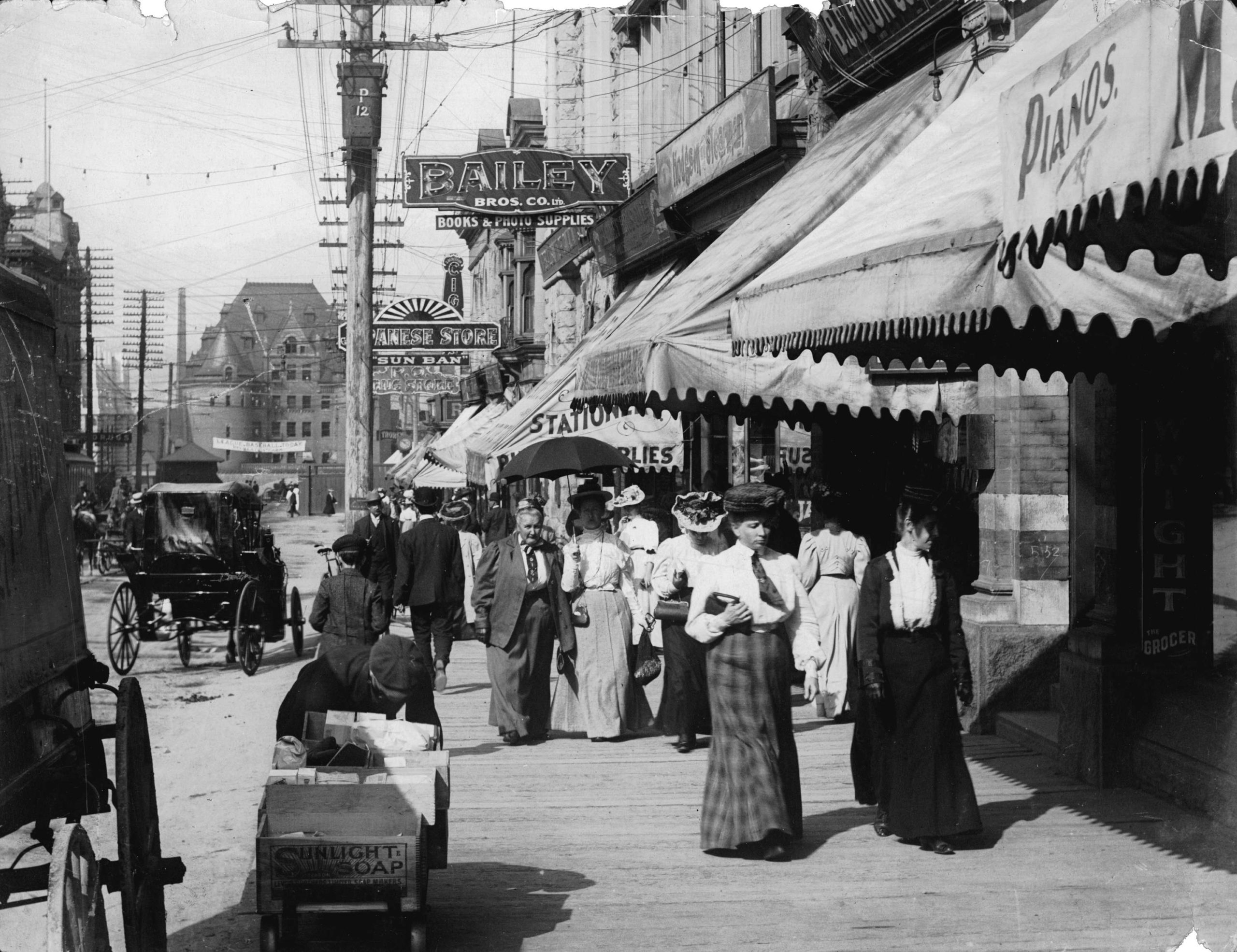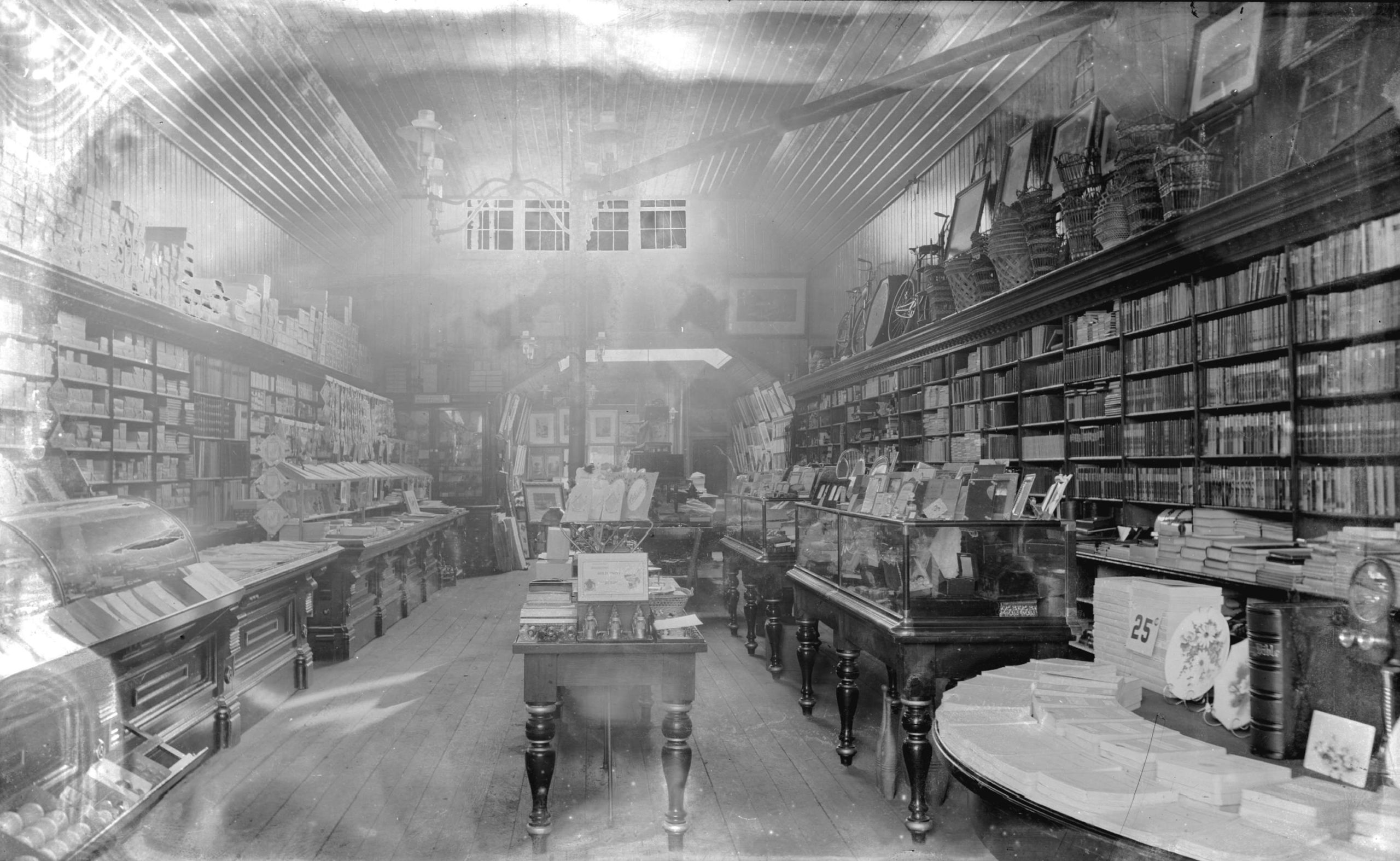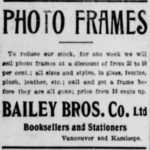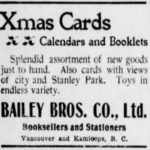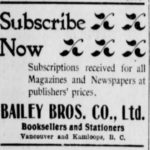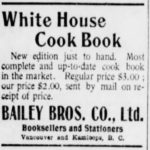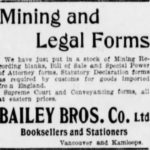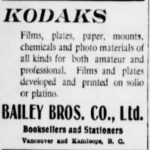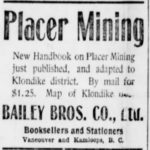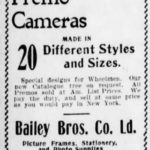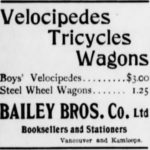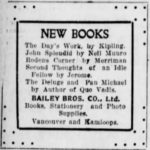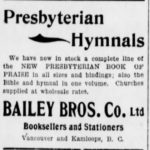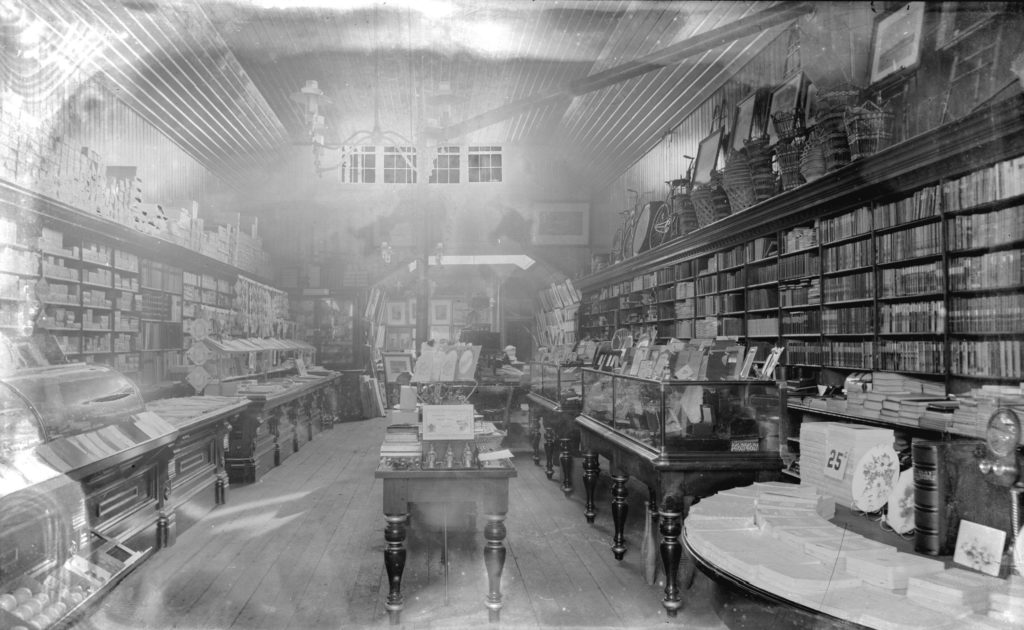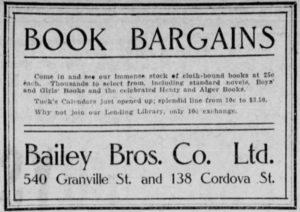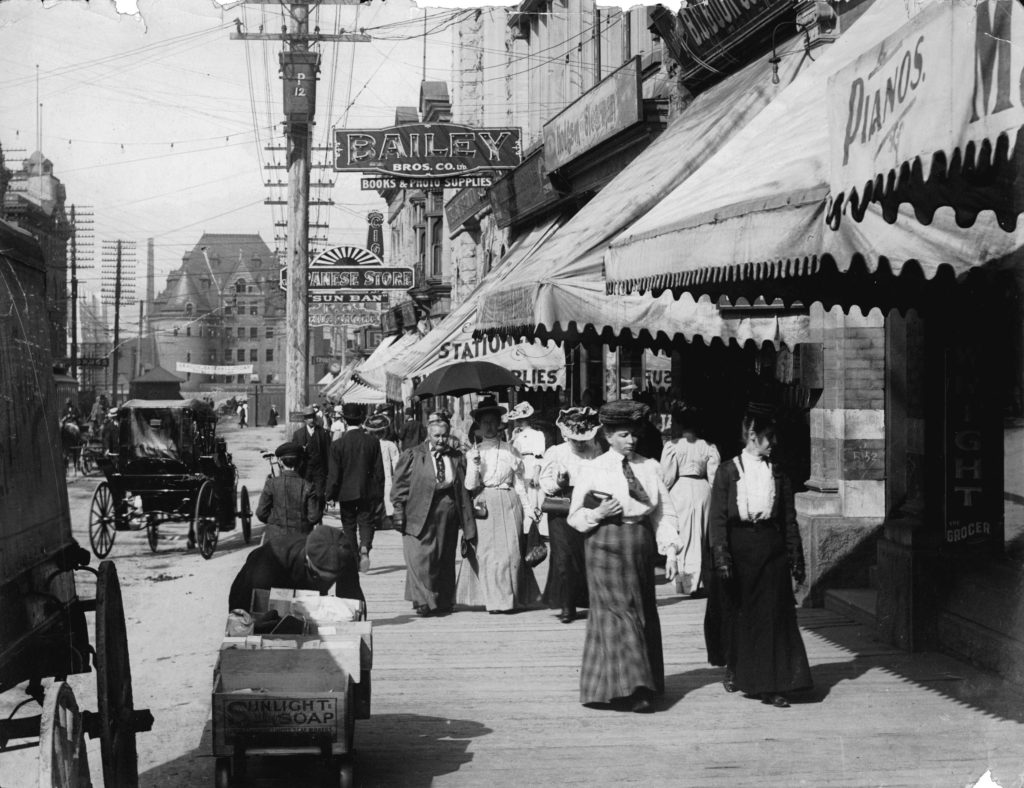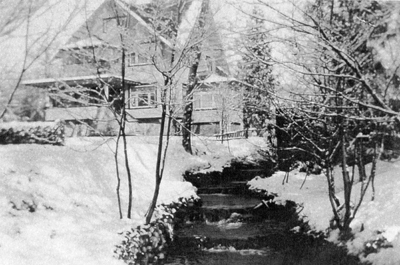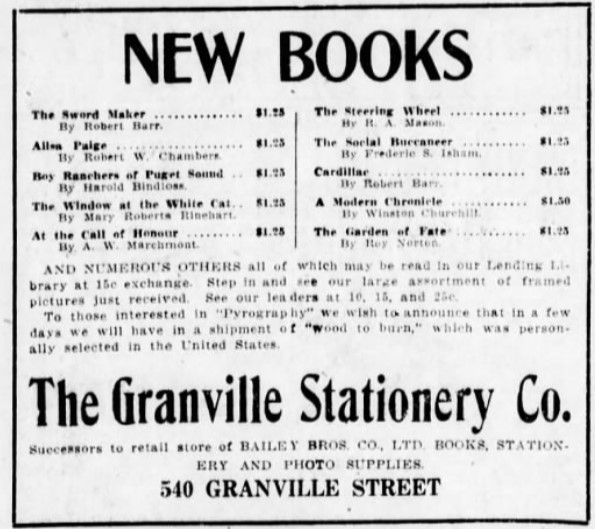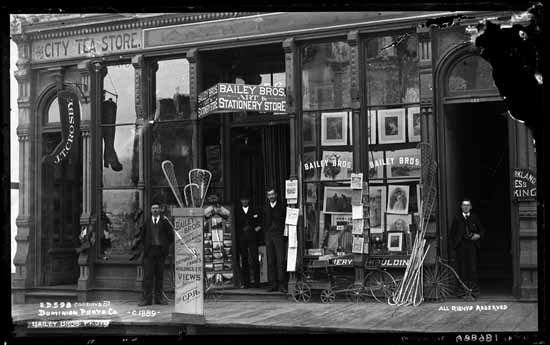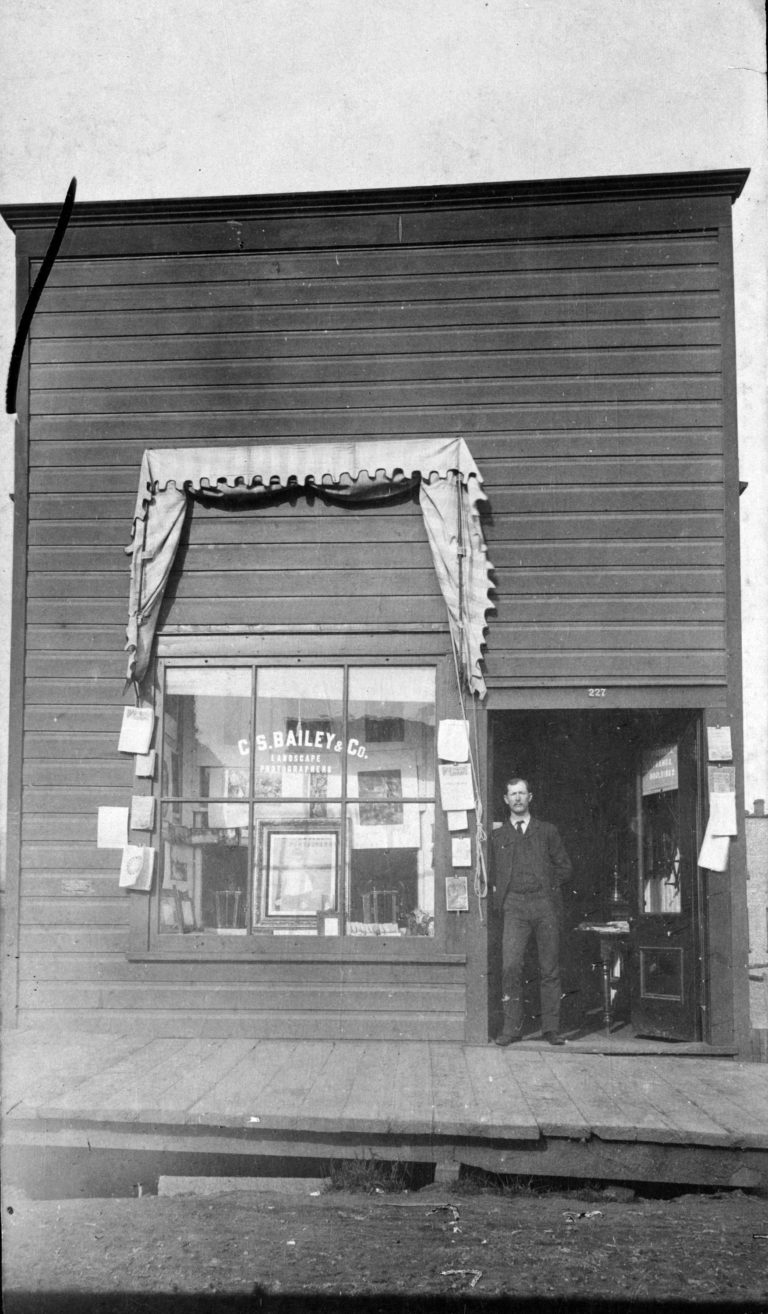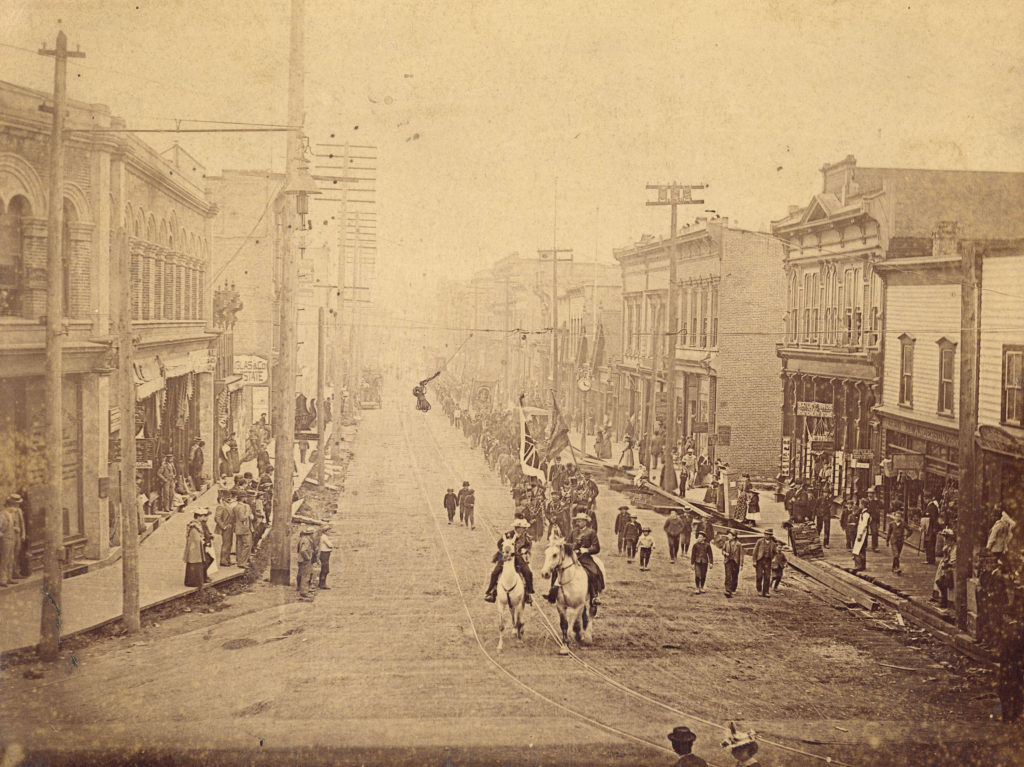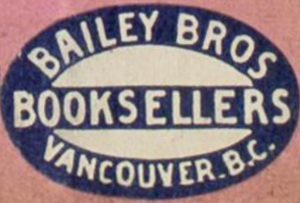(If you haven’t yet read them, start with part 1 and part 2 of this series.)
I ended the previous installment of this series in 1911, when Granville Stationery Co. (headed by William Payne and J.P. Mott Woodworth) assumed control of Bailey Bros.’ wholesale department, having taken over its retail store at 540 Granville the previous year.
Bailey Bros.’ owner William Bailey had also sold his store at 138 Cordova to the Vancouver Book Co. in 1910. When this business failed in 1913, Granville Stationery bought its stock and sold it off at clearance prices (1).

William Bailey evidently retained a share in Granville Stationery, as he continued to be listed as a company director in city directories. Payne left in 1918, leaving Bailey and Woodworth as director and manager, respectively.
In February 1920, Bookseller & Stationer reported that Granville Stationery had greatly expanded its book department and had brought bookseller Ben Toon over from Spencer’s Department Store to run it. Toon wasn’t there long, though; by July he was with the Book Shop, George Forsyth’s store at the corner of Homer and Hastings (2).
Still more instability came in the spring of 1921, when Arnold & Quigley bought the building housing Granville Stationery’s store, forcing the company to vacate the premises when its lease expired at the end of the year (3).
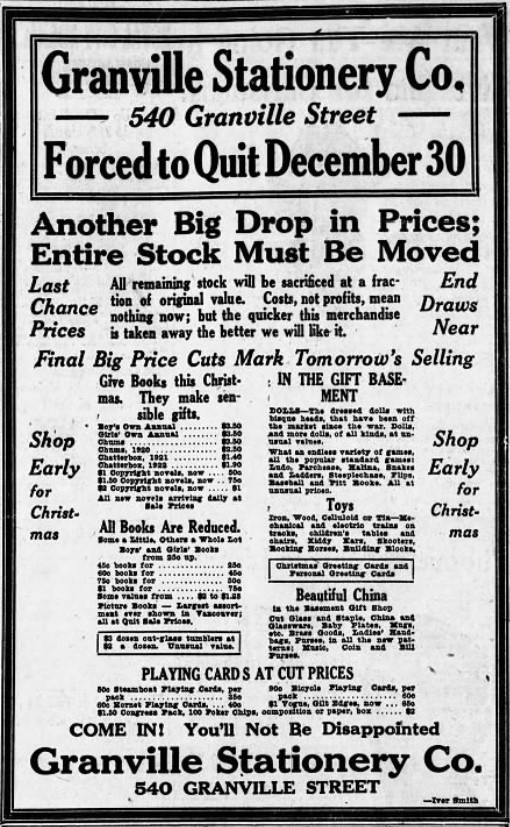
Granville Stationery resumed business at 619 West Pender Street in 1922, and William took over as the manager (4). But time was running out on both him and his once-flourishing business.
In June 1925, a huge liquidation sale was announced in local newspapers. “This store carried stock of $50,000 in 1914 and did the largest business in the city,” the article read, noting that the move from Granville Street had been disastrous. “Now with a $12,000 stock we’re going into voluntary liquidation” (5).
William lost nearly everything when the business failed, including his grand family home on Chesterfield Avenue in North Vancouver, which was divided up into the Garden Court apartments. The Baileys relocated to 12th and Blanca near the University of British Columbia for a few years before returning to North Vancouver, this time as renters at Garden Court (6).
William Bailey died on July 2, 1936, at the age of seventy. He was survived by his wife, Jean, and a daughter, Jean Grace Kathleen (7). Fittingly for a girl whose father had run one of Vancouver’s earliest bookstores, Jean Grace’s university yearbook entry said she could be found “at any time, in any lecture, reading English 13 novels” (8).
Notes
(1) “Secures Wholesale End,” Province (June 8, 1911), 28; “The Granville Stationery Store Is Selling Off a Bankrupt Stock,” Vancouver Daily World (August 4, 1913), 5.
(2) Bookseller and Stationer (February 1920), 40; Bookseller and Stationer (July 1920), 34.
(3) “Firm Buys Property on Granville Street, Vancouver Daily World (May 7, 1921), 22.
(4) Vancouver Daily World (February 16, 1922), 6.
(5) Vancouver Sun (June 5, 1925), 15.
(6) Sharon Proctor, “Garden Court,” Express (North Vancouver Museum and Archives newsletter) (June 2014).
(7) Province (July 3, 1936), 17.
(8) “Jean Grace Kathleen Bailey,” The Totem (yearbook) (1929), 20.
